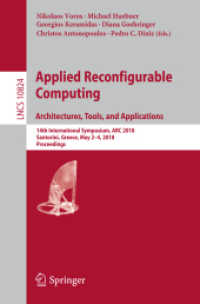- ホーム
- > 洋書
- > 英文書
- > Science / Mathematics
Full Description
The papers represent current work in different disciplines of origami and they are grouped into four subject themes, Volume 1 - Engineering I, Volume 2 - Engineering II, Volume 3 - Mathematics, Computation, History and Mental Health, and Volume 4 - Design and Education.








